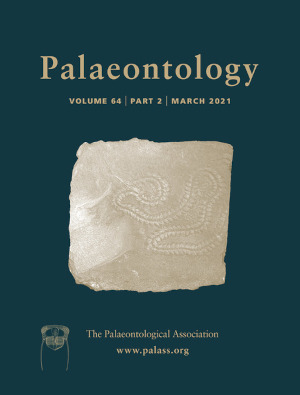Reg. Charity No. 1168330

Morphological convergence can be assessed using a variety of statistical methods. None of the methods proposed to date enable the visualization of convergence. All are based on the assumption that the phenotypes either converge, or do not. However, between species, morphologically similar regions of a larger structure may behave differently. Previous approaches do not identify these regions within the larger structures or quantify the degree to which they may contribute to overall convergence. Here, we introduce a new method to chart patterns of convergence on three-dimensional models using the R function conv.map. The convergence between pairs of models is mapped onto them to visualize and quantify the morphological convergence. We applied conv.map to a well-known case study, the sabre-tooth morphotype, which has evolved independently among distinct mammalian clades from placentals to metatherians. Although previous authors have concluded that sabre-tooths kill using a stabbing ‘bite’ to the neck, others have presented different interpretations for specific taxa, including the iconic Smilodon and Thylacosmilus. Our objective was to identify any shared morphological features among the sabre-tooths that may underpin similar killing behaviours. From a sample of 49 placental and metatherian carnivores, we found stronger convergence among sabre-tooths than for any other taxa. The morphological convergence is most apparent in the rostral and posterior parts of the cranium. The extent of this convergence suggests similarity in function among these phylogenetically distant species. In our view, this function is most likely to be the killing of relatively large prey using a stabbing bite.
AcknowledgementsWe are grateful to Stephan Lautenschlager and an anonymous reviewer for providing important advice. 79 specimens included in the present study are from the PhD database of DT, whose PhD project received support from the ‘Avvio alla Ricerca 2019’ funding which is financed by the University of Rome ‘La Sapienza’. DT also received support from the SYNTHESYS Access programme that is financed by the European Community Research Infrastructure Action under the FP7 (ES-TAF-2750 awarded to DT). LMW acknowledges support from the United States National Science Foundation (IOB-0517257, IOS-1050154, IOS-1456503). We owe a huge debt of thanks to all curators, collection managers and staff, whose help and support was fundamental for the sampling operations. In particular, with anticipated apologies for certainly forgetting to explicitly mention several of the many people to whom thanks are owed, we want to thank: Susana Fraile, Jorge Morales, Géraldine Veron, Aurélie Verguin, Riccardo Castiglia, Cristiano Dal Sasso, Pierfilippo Cerretti, Adriano De Faveri, Saverio Bartolini Lucenti, Paolo Agnelli, Tony Parker, Itatí Olivares, Agustín Ruella and Eulàlia Garcia Franquesa. We also want to thank Denis Geraads and Nikolai Spassov for providing DT with a copy of their 3D model of Y. garevskii.
MM and DT contributed equally. MM, AP, and PR conceived the study. MM, AP, PR, and SC prepared the code. MM, GS, DT, LW, AM and MMod contributed to collection and preparation of the study sample. MM, SW and PR lead the writing. All the authors contributed to the preparation of the manuscript.